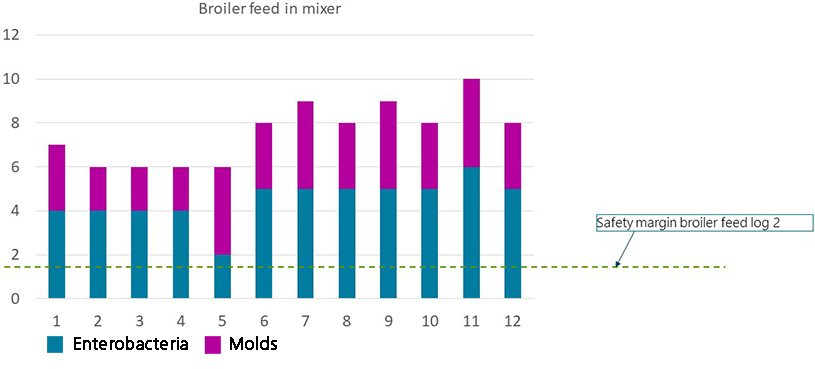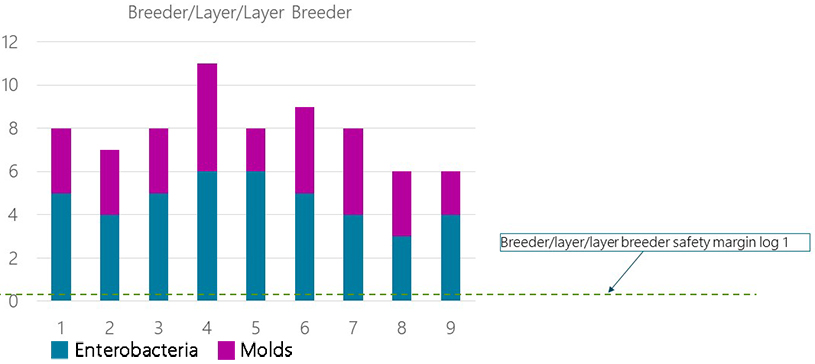How clean is your feed?
Feed represents the biggest cost to any livestock production unit; approximately 75% of the total outgoings are spent on feed. As a result, great care and attention is given to the formulation of feeds, ensuring the nutritional requirement of the animal is met with each ration in order to deliver optimal performance levels.
Feed is routinely analyzed to check the levels of nutritional components including protein, fiber, vitamins, minerals, moisture, and fats. The analysis results allow adjustments to be made to increase feed intake and reduce undesirable characteristics such as the formation of dust.
But how clean is the feed? Are there any contaminants in the feed? When was the last time the feed was analyzed for enterobacteria or mold content for example?
Contaminated feed is a big problem for producers due to the additional stress it puts on the animal. Bacteria entering the gut via the feed can colonize parts of the gastrointestinal tract causing problems with digestibility and nutrient uptake. Molds produce mycotoxins which have a number of detrimental effects on animal health and performance.
Physical manifestations of feed contamination include conditions such as salmonella contamination, gastroenteritis, and many others. These can have a direct negative impact on performance in terms of carcass rejections, increased mortality rates, and increased veterinary costs for disease treatments. Indirectly, increased stress on the immune system of the animal will reduce the amount of energy used for growth, thus hindering zootechnical performance levels.
Perstorp’s Feed Hygiene Monitoring Service
You cannot control what you do not measure. And ignoring feed hygiene problems can have devastating consequences. In response, we set up our Feed Hygiene Monitoring Service. We invited European customers to send in feed samples for analysis at the laboratory in the Netherlands free of charge to better assess and understand the extent of the feed hygiene problem. The results were startling.
The safety margin for contaminants in broiler feeds is log 2. But the samples that were received and tested were already at or above this safety level (Figure 1).

Figure 1. Analysis of broiler feed samples for enterobacteria and mold
To minimize vertical contamination, the safety margin in breeder and layer feeds is lower at log 1. However, analysis showed the problem was even worse in these feeds with all samples testing well above the safety margin level (Figure 2). When contamination is transferred from the animal into the eggs, there is more likely to be contamination in the progeny.

Figure 2. Analysis of breeder and layer feed samples for enterobacteria and mold
Interestingly, contamination levels in the pelleted feed samples we received were lower than for the other types of feed, suggesting that pelleting helps to reduce contamination. Although the contamination results were lower, pelleting did not completely eliminate all contaminants so feed hygiene solutions cannot be ignored for pelleted feed. In addition, pelleting is an expensive and intensive process and not all feeds can be processed in this way.
Improving feed hygiene
Having uncovered such concerning results in the initial samples, the Feed Hygiene Monitoring Service has been extended to European customers. Regular sampling is the only way to be fully aware of any potential feed hygiene problem and we encourage customers to send samples to us for analysis on a timely basis.
When contamination levels were high, certain products can be used to reduce or eliminate the contamination. We have a range of feed hygiene products that help control bacterial and mold contamination in feeds. Please contact a member of our Animal Nutrition team to find out more.